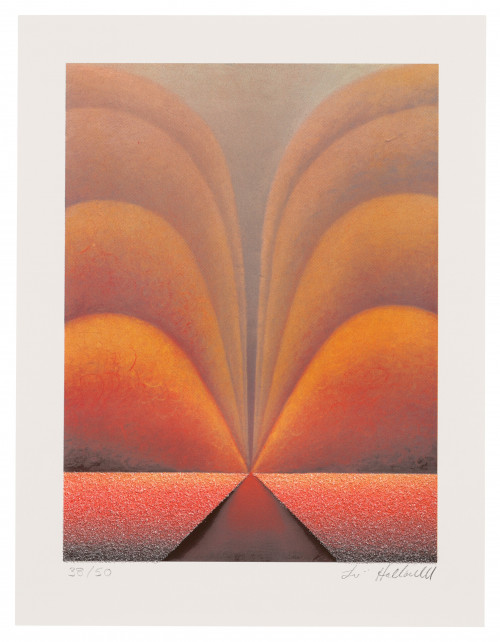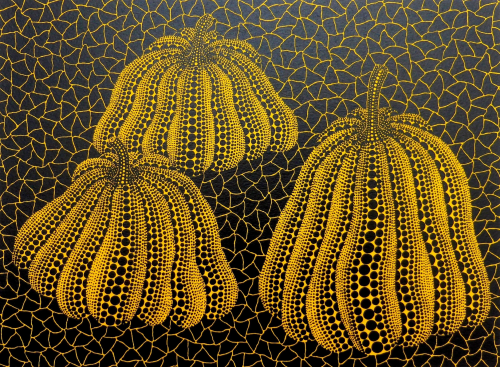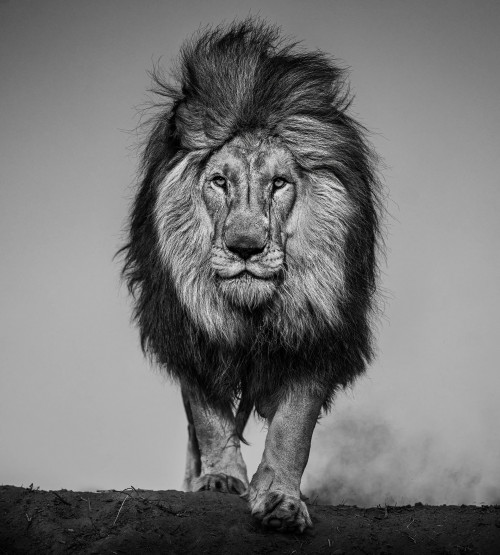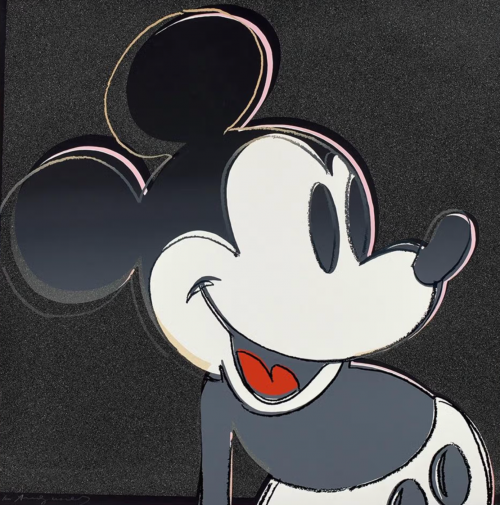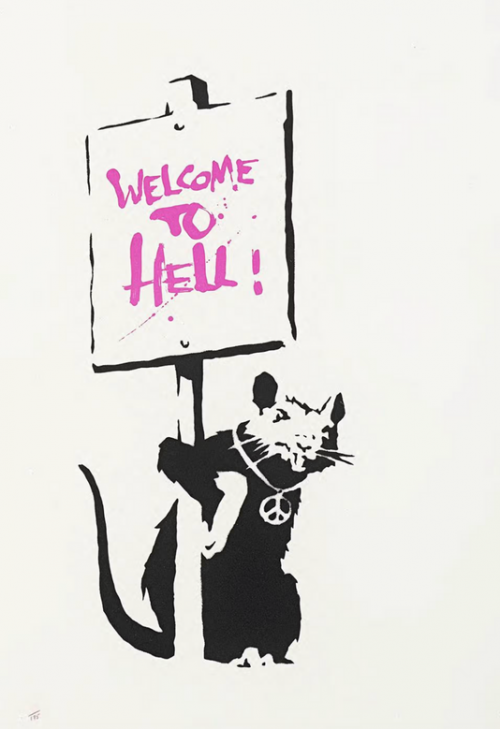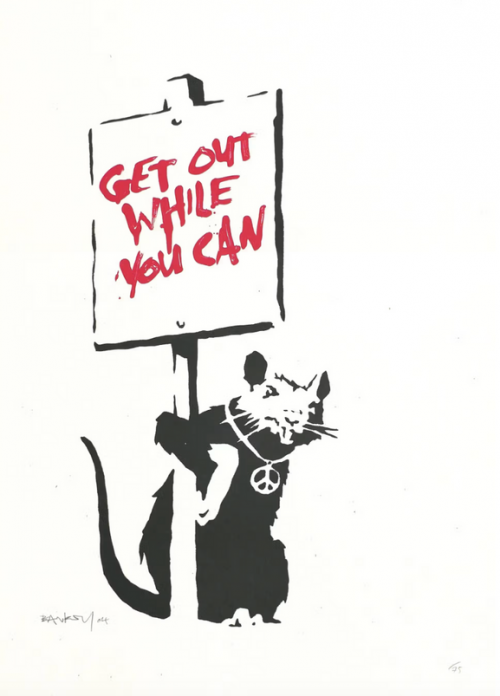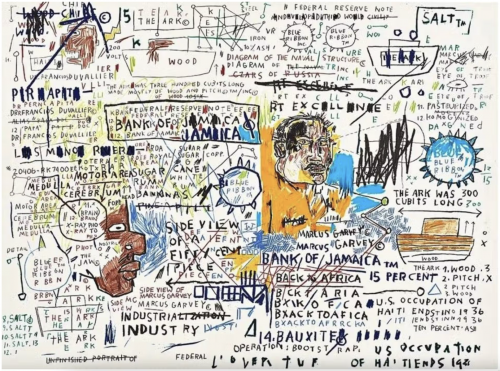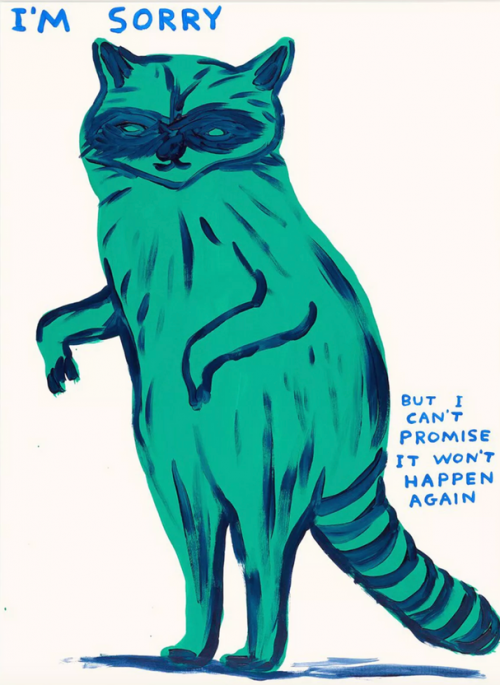Popular Ads
"Pinocchio" by Liu Ye is a monochromatic work that captures the essence of the classic character in a unique and contemplative manner. Liu Ye's portrayal of Pinocchio features the puppet with a serene, almost melancholic expression, set against a stark black background. The simplicity and muted tones of the piece highlight the emotional depth and introspective quality of the character. Known for blending Eastern and Western influences, Liu Ye often infuses his work with a sense of innocence and introspection. "Pinocchio" exemplifies his distinctive style, focusing on themes of childhood, nostalgia, and the interplay between fiction and reality.Printed by Vigna Antoniniana, Rome
Published by
"The Boundaries of Our Reality" by The Connor Brothers is a thought-provoking screen print blending vintage imagery with modern typography. The artwork features a glamorous woman in a satin gown, lounging against a backdrop of colourful circles and a striking yellow background. The text, "The boundaries of our reality are set by the limits of our imagination," underscores themes of perception and creativity. Typical of The Connor Brothers' oeuvre, this piece combines humour and irony with a nostalgic aesthetic, challenging viewers to question the nature of reality and the power of imagination.Mint condition.
Hand Signed and Numbered.
Mario Schifano’s Tutte Stelle presents a dynamic constellation of red and yellow stars scattered across a hazy, textured background, evoking cosmic wonder and abstraction. Created during his exploration of popular culture and symbols, the work reflects Schifano’s interest in blending minimalism with the graphic language of mass media. This painting is emblematic of Schifano’s oeuvre, where recurring themes of modernity and iconography are infused with a playful yet profound aesthetic. The piece epitomises his ability to merge conceptual depth with striking visual simplicity.
"Onbu (Piggyback) (Blue)" (2013) by Stik is a minimalist yet emotionally evocative piece featuring two of the artist's signature stick figures, with one carrying the other on its back. Rendered in black lines against a pale blue background, this artwork captures a sense of support and camaraderie. This particular impression is notable for the clear visibility of the woodgrain printing in the background, adding a textured dimension to the piece. Stik's simple yet expressive style conveys deep emotion through basic forms, and his work often addresses themes of community and human connection. This limited edition piece reflects Stik's impactful visual language and social commentary.Printed at t
ABE publishing (2017) No.186, 1993, screenprint, 24.2x33cm, sheet size 33.5x43cm (with full margins), signed in the lower right margin, titled and dated in the lower center margin, ed.160 in the lower left margin, framed.
PROVENANCE
Acquired directly from the artist by the present owner in 2018EXHIBITED
London, Royal Academy of Arts, RA Schools Show, 2018.
This striking overpainted book cover by Georg Baselitz, titled Art Edition (Overpainted cover) (2021), transforms a traditionally functional object into a vivid work of art. Painted in bold yellow with expressive black linear forms, the piece evokes themes of fragmentation and inversion, hallmarks of Baselitz’s oeuvre. The gestural marks suggest human and organic forms in flux, echoing the artist’s ongoing exploration of identity and disorientation. This work aligns with Baselitz’s characteristic raw energy and abstract figuration, though its application on a book cover presents an unusual and compelling deviation in medium while retaining his distinctive visual language.
Chris Levine’s She’s Light (Kate Moss) (2014) is a mesmerising screenprint that captures the supermodel in an ethereal, almost meditative state. Her closed eyes, luminous skin, and striking red lips evoke a sense of tranquillity and transcendence, reflecting Levine’s fascination with light and perception. This work is part of Levine’s ongoing exploration of portraiture through advanced technology and laser imagery, much like his renowned depictions of Queen Elizabeth II. She’s Light aligns with his signature style, blending celebrity iconography with a spiritual, almost holographic quality, elevating the subject beyond the material world.
In the Line of Fire is a powerful black-and-white photograph by David Yarrow, capturing a lion mid-stride with arresting clarity and compositional precision. Shot in 2024, the work exemplifies Yarrow’s signature approach to wildlife photography—dramatic close-ups, high contrast, and emotive intensity. The lion’s direct gaze and the rising dust underscore themes of majesty, confrontation, and survival. Characteristic of Yarrow’s oeuvre, the image blends raw naturalism with cinematic grandeur, reflecting his ongoing mission to spotlight the vulnerability and dignity of Earth’s most iconic creatures through meticulously composed, large-format photography.Photographed in South Africa.
Provenance:
Private collection USA
Halcyon Gallery, London
Private collection, UK
Tomokazu Matsuyama's Daylight Away captivates with its vibrant collage of colours and dynamic forms within a figure-eight composition. The artwork integrates traditional Japanese motifs, such as kimono patterns and natural elements, with modern, abstract aesthetics, symbolising the tension between tradition and globalisation. Matsuyama’s signature style blends East and West, with fragmented layers and vivid contrasts, a recurring theme in his oeuvre. Daylight Away exemplifies his exploration of cultural identity and hybridity, showcasing a seamless interplay of chaos and harmony. This piece aligns strongly with his typical work, embodying his unique visual language and thematic depth.Signed
"Little Girl with Balloons" by Liu Ye is a charming screenprint that captures a sense of innocence and balance. The artwork features a young girl standing on a yellow balloon while holding a red balloon, her expression calm and composed. The background is a soft, muted grey, contrasting with the vivid colours of the balloons, enhancing their playful impact. Liu Ye's characteristic style often incorporates simple yet poignant imagery, focusing on themes of childhood and simplicity. This screenprint is emblematic of his work, blending a serene atmosphere with bright, captivating elements, inviting viewers into a delicate, dreamlike world.




